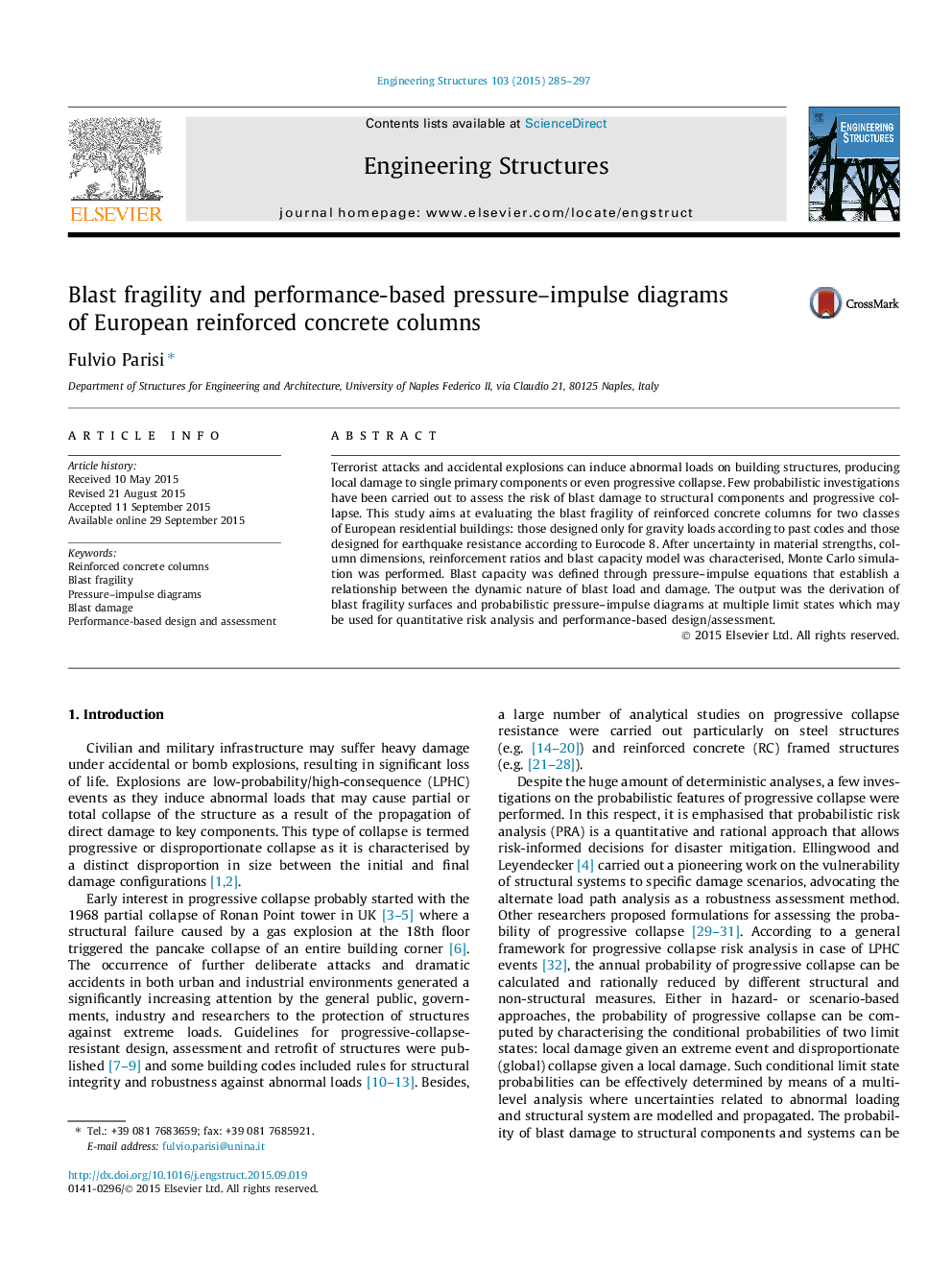| Article ID | Journal | Published Year | Pages | File Type |
|---|---|---|---|---|
| 265953 | Engineering Structures | 2015 | 13 Pages |
•Blast fragility of European reinforced concrete columns was investigated.•Uncertainty in column properties and capacity model was characterised.•Capacity was modelled via pressure–impulse diagrams validated by past studies.•Blast fragility surfaces at multiple damage-dependent limit states were obtained.•Probabilistic P–I diagrams for performance-based design and assessment were derived.
Terrorist attacks and accidental explosions can induce abnormal loads on building structures, producing local damage to single primary components or even progressive collapse. Few probabilistic investigations have been carried out to assess the risk of blast damage to structural components and progressive collapse. This study aims at evaluating the blast fragility of reinforced concrete columns for two classes of European residential buildings: those designed only for gravity loads according to past codes and those designed for earthquake resistance according to Eurocode 8. After uncertainty in material strengths, column dimensions, reinforcement ratios and blast capacity model was characterised, Monte Carlo simulation was performed. Blast capacity was defined through pressure–impulse equations that establish a relationship between the dynamic nature of blast load and damage. The output was the derivation of blast fragility surfaces and probabilistic pressure–impulse diagrams at multiple limit states which may be used for quantitative risk analysis and performance-based design/assessment.
